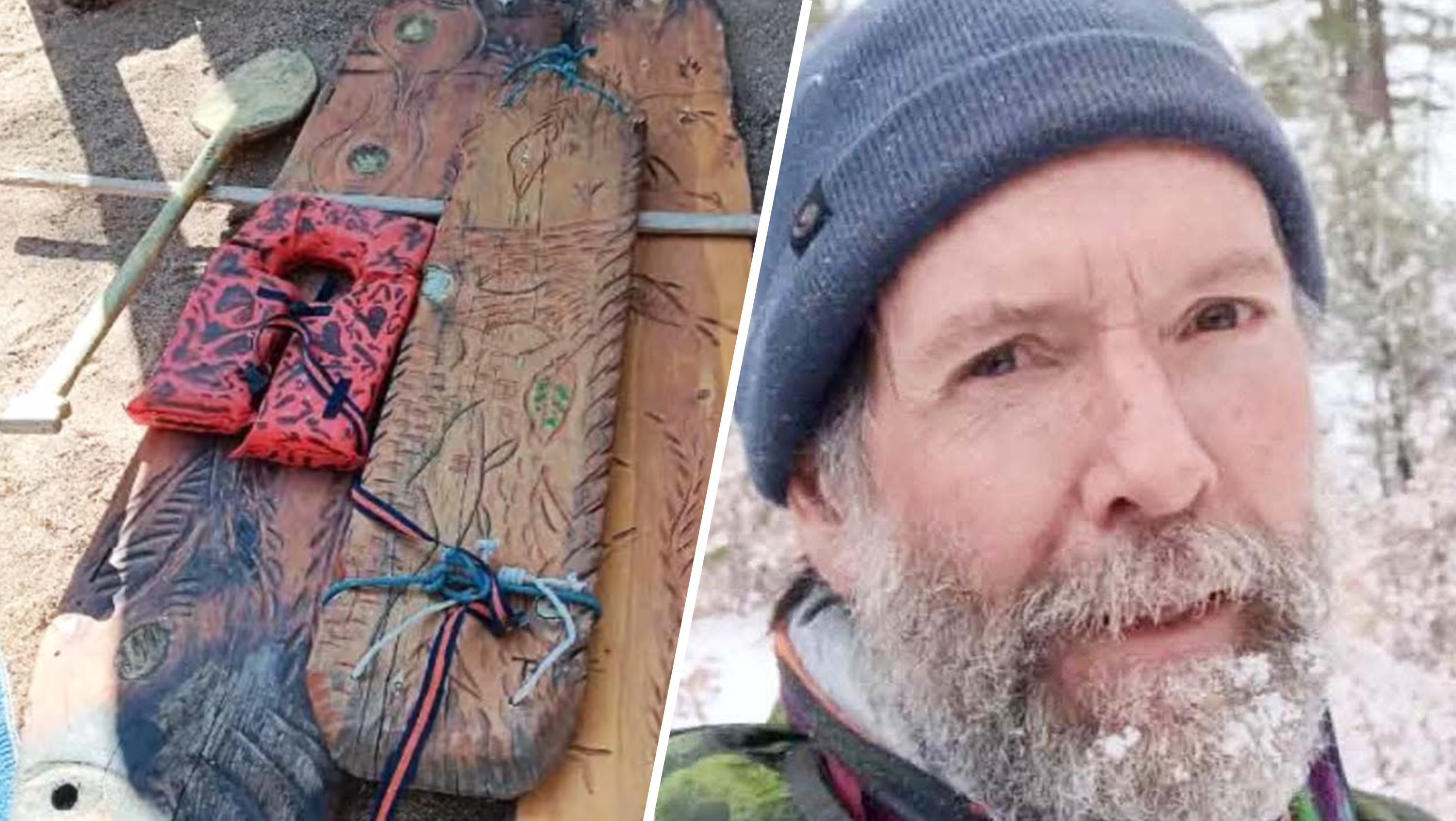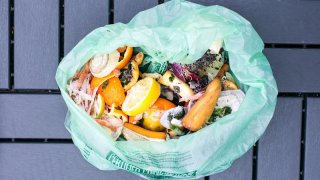
Your trash actually might be treasure — in an environmental sense, that is.
According to the EPA, food and yard waste makes up about 30% of what we throw away. But through a process called composting, you can recycle all of that waste into a rich, organic material that can be used as a plant fertilizer to help your garden grow.
Composting is not only good for the environment (taking this material out of landfills can help reduce the amount of methane released in the air), but it’s also a fun project for your home — just ask Al Roker! You can do it in your yard if you have one or even in your apartment kitchen.
Get San Diego local news, weather forecasts, sports and lifestyle stories to your inbox. Sign up for NBC San Diego newsletters.
“When you see it done firsthand, it’s addicting,” said Justin Young, director of nutrition education for High Plains Food Bank in Amarillo, Texas. He and his wife have been composting for years, both at home and for work, where they run the garden for the food bank. Seeing that a huge chunk of America’s waste is food product, composting is something that Young encourages everyone to try.
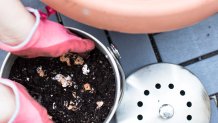
Interested in giving it a go? Here’s what you need to know about the process:
How to compost in your yard
- 1. Talk to your neighbors
“If you’re going to be composting outside, talk to your neighbors if you think they’ll have problem with it,” Young said. Sometimes there is a smell, although if you’re tending to it properly, there shouldn’t an odor.
“You can also see if they’d be interested in doing it with you,” he said. “You can benefit more by working with the people around you.” For example, if you have a lot of carbon-rich yard waste and not enough nitrogen-rich food waste, it could mess up the ratio (we’ll get to that in a minute), making it harder for it to compost.
- 2. Choose your bin
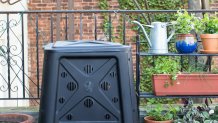
You can buy a composting bin at your local garden center or there are some cool ideas online for creating your own, Young suggested.
“Just make sure you have proper ventilation,” he said. “Otherwise, you could kill off the bacteria that’s needed for the process.” He also advises not to put the bin anywhere near pests, such as next to an abandoned house.
- 3. Start layering
An easy way to remember this step is there are green and brown layers and you’re going to want to alternate between the two.
- Green refers to things that are high in nitrogen, so your plant-based kitchen scraps, grass, weeds, etc.
- Brown refers to things that are carbon-based, so dead leaves, wood chips, straw, etc.
“You’ll read about a million different ratios people suggest,” Young said. “But you can make this process as fast or slow as you want by using different ratios of materials. The more diversity of materials you use, the better.”
U.S. & World
He and his wife teach people to do a simple 50-50 ratio — putting a green layer, then a brown layer — and keeping it moist with water (it should feel like a wrung-out sponge). Keep a small composting pail on your kitchen counter and add scraps daily to the pile outside, making sure to cover them with a layer of brown on top to avoid attracting pests.
One note: Beginners should avoid adding meats and dairy to the pile as pests and odor could be a problem if it’s not the right temperature. Also bread takes too long to compost and can attract critters. Start small with fruits and vegetables.
- 4. Stir it
Once you build the pile — with the right ratio of carbon, nitrogen, air and water — it will start to heat up. “You can either just keep checking it or put a meat thermometer in there to watch the temperature climb,” Young said, adding that it should get up to 140 to 160 degrees. “When the temperature starts to fall, stir it and it’ll heat up again.” Keep repeating this process. (Hint: This is where a spinning compost bin might come in handy.)
5. Harvest it
When the pile stops heating up, it should look like dirt — dark brown and crumbly with an earthy smell (so … not like food waste anymore). That means it's finished. Highly managed systems, such as the Berkeley method, can be complete as soon as 18 days or if you just let it pile it up and wait, it can range from months to a year depending on the content.
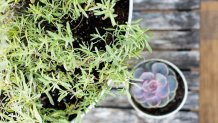
How to compost without a yard
- 1. Check for city-sponsored programs
Many places, including New York City, San Francisco and Boston, have a community compost program where the city will provide bins to drop off your scraps. If you’re doing this, get a small composting bin for your kitchen and use special compostable bags (such as BioBags) to line the container.
- 2. Buy or make your own compost bin
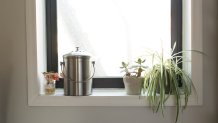
There are many options for composting in your apartment — no yard required.
The Internet is filled with apartment-appropriate composting options, including this EcoCrock bin and this OXO Good Grips bin. Here’s a DIY guide for creating your own using a container, some soil and newspaper. And if you’re feeling really brave, you can create one with composting worms, which Young and his wife do at home.
“Start small and go slow,” Young said about this method. “It’s really easy to go online and see a special on 50 pounds of worms and get excited, but you want to figure out how your system is going to fit into your lifestyle,” he said, adding that you can always increase the number of worms later on. One more note about the red wigglers, as they’re called: Young says they don’t like spicy things, so hold back from feeding them things like jalapenos, garlic or onions.
- 3. Use bin contents for indoor plants or take them to your community compost center
You have a few options as to how you can use the contents.
Once a week, you can take your bin to your community compost center to empty it out. Compost created at the community bins often goes to parks, gardens and other public areas where you and those around you can enjoy the fruits of your labor!
If you prefer to use the compost yourself, then you'll need to wait for the waste to turn into soil. At that point, feel free to add it to your plant pots.

The bottom line? There are so many different variations of composting, and you’ll find the best method for you once you jump in and start trying it. Not only is it a fun way of working together as a family, but you’ll also be helping out the environment and making nutrients for your own plants or a local community garden.
Take the #OneGreenThing pledge: What’s the one green thing you’ll try to help the planet this month?
This story was originally published on April 20, 2016
This story first appeared on TODAY.com. More from TODAY:


